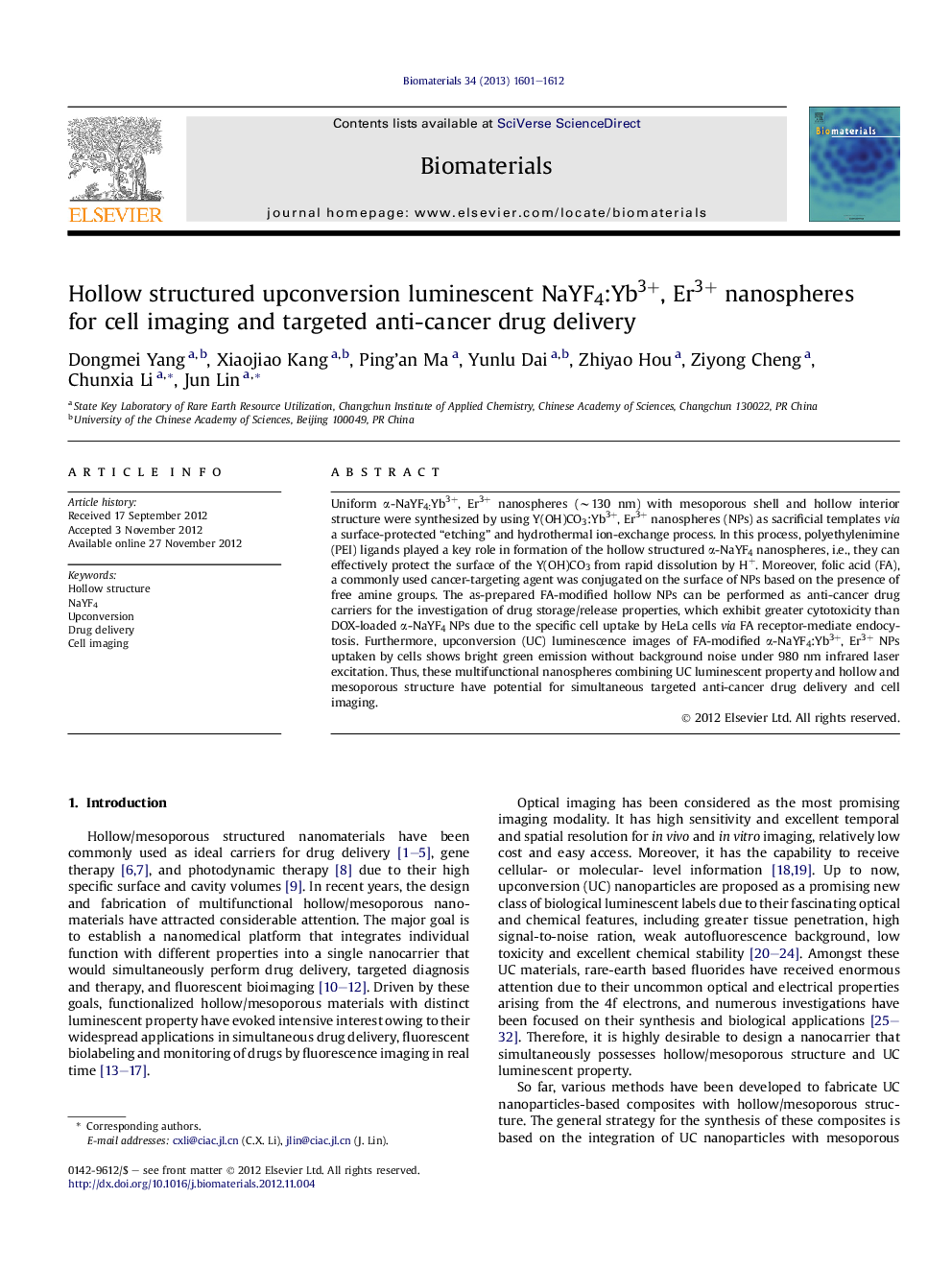| Article ID | Journal | Published Year | Pages | File Type |
|---|---|---|---|---|
| 10229225 | Biomaterials | 2013 | 12 Pages |
Abstract
Uniform α-NaYF4:Yb3+, Er3+ nanospheres (â¼130 nm) with mesoporous shell and hollow interior structure were synthesized by using Y(OH)CO3:Yb3+, Er3+ nanospheres (NPs) as sacrificial templates via a surface-protected “etching” and hydrothermal ion-exchange process. In this process, polyethylenimine (PEI) ligands played a key role in formation of the hollow structured α-NaYF4 nanospheres, i.e., they can effectively protect the surface of the Y(OH)CO3 from rapid dissolution by H+. Moreover, folic acid (FA), a commonly used cancer-targeting agent was conjugated on the surface of NPs based on the presence of free amine groups. The as-prepared FA-modified hollow NPs can be performed as anti-cancer drug carriers for the investigation of drug storage/release properties, which exhibit greater cytotoxicity than DOX-loaded α-NaYF4 NPs due to the specific cell uptake by HeLa cells via FA receptor-mediate endocytosis. Furthermore, upconversion (UC) luminescence images of FA-modified α-NaYF4:Yb3+, Er3+ NPs uptaken by cells shows bright green emission without background noise under 980 nm infrared laser excitation. Thus, these multifunctional nanospheres combining UC luminescent property and hollow and mesoporous structure have potential for simultaneous targeted anti-cancer drug delivery and cell imaging.
Related Topics
Physical Sciences and Engineering
Chemical Engineering
Bioengineering
Authors
Dongmei Yang, Xiaojiao Kang, Ping'an Ma, Yunlu Dai, Zhiyao Hou, Ziyong Cheng, Chunxia Li, Jun Lin,
